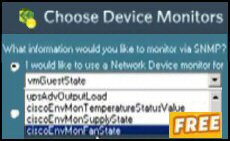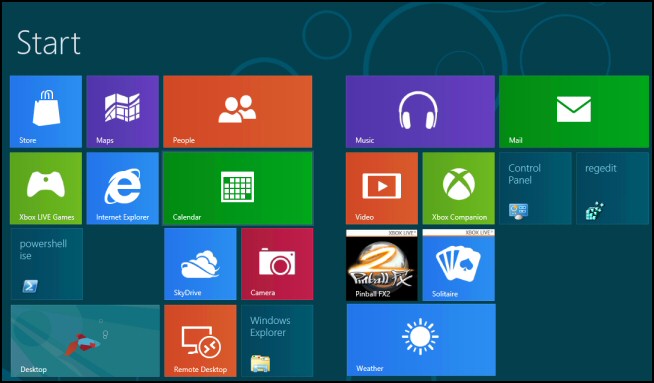Windows 8 Installation
Here are tips on how to install the Windows 8 RTM (Release to Manufacturer), or regular version.
How to Get Started with Microsoft Windows 8
- Traps When Installing Windows 8
- System Requirements for Windows 8
- Windows 8 Consumer Preview
- How to Install Windows 8.1
- Windows 8 Post Install Setup
♦
Traps When Installing Windows 8
Although installing any version of Windows is straightforward, there are three tiny traps to avoid:
Trap 1: Get the product key! Unlike the developer beta, regular versions of Win 8 require a genuine product key. You are looking for a 20 digit string such as: DBJXZ-8XBW8-4328T-B23TX-BGUYJ.
Confession: This was a case of more haste less speed, a combination of tiredness and over-excitement caused me to type the Sha-1 hash numbers instead of the product key! I can laugh now, but please don’t repeat my mistake!
Trap 2: Be patient during first 4 minutes. My initial install screen froze for at least 4 mins; I even restarted the boot loader procedure twice until the penny dropped, I realized that static screen with the fish was not going to do anything for 4 minutes!
Trap 3: Go for a clean install. People who go for an upgrade from Windows 7, or Windows 8 Developer Preview sometimes get a problem at about 90% completion. As you can neither upgrade to the RTM version, nor downgrade to the previous OS, a clean install makes the most sense.
Plan How to Install Your Windows 8 Operating System
- Research a URL to download the Windows 8 .iso file.
- Find an ISO burner, Windows 7 has one built-in.
- Get ready with a blank 4.7 DVD (DVD-9 for the 64-bit version)
- Prepare a test computer, or a virtual machine.
- You need a product key for this installation.
Alternative install method: Try the web based installer which incorporates the Upgrade adviser and Easy transfer wizard.
System Requirements for Windows 8
- Processor – 1 GHz
- RAM – 2 MB 64-bit
- Disk Space – 20 GB for the operating system
- Graphics Adapter – At least Microsoft DirectX 9
- Resolution of 1366 x 768 to get ‘Snap Apps’
- DVD – To install your Microsoft operating system.
Recommendations: Install Windows 8 in a Virtual Machine, or alternatively, use an old laptop as a test machine. To really get to grips with the Metro-style UI install Windows 8 on one of these systems: HP Elitebook 2760p convertible, ASUS EP121 tablet or a Dell Inspiron Duo convertible.
Good News: These Virtual Machines Are Supported
- Hyper-V in Windows Server 2008 R2
- VMware Workstation 8.0 for Windows
- VirtualBox 4.1.2 for Windows
Beware: Window 8 won’t install here: Microsoft Virtual PC, Windows 7 XP Mode VMware Workstation 7.x or older. The reason is they don’t support Hypervisor Type 1.
Strange but true: People asked for 64-bit versions of Windows 8 (and 7) to run in Virtual machines, but when Microsoft deliver 64-bit compatibility, most people choose to install 32-bit versions for ease of use and performance reasons.
Plan B – Dual Boot: If you have a second partition of at least 20 GB then you could install Windows 8 there. The result would be:
C: \Old Operating System
D: \Windows 8
Please think through how to preserve any existing files on that second partition before allowing the Windows 8 install to format the D: partition. Once you have installed Windows 8, pay close attention to menu choices as soon as the machine powers on.
Guy Recommends: A Free Trial of the Network Performance Monitor (NPM) v11.5
v11.5
SolarWinds’ Orion performance monitor will help you discover what’s happening on your network. This utility will also guide you through troubleshooting; the dashboard will indicate whether the root cause is a broken link, faulty equipment or resource overload.
What I like best is the way NPM suggests solutions to network problems. Its also has the ability to monitor the health of individual VMware virtual machines. If you are interested in troubleshooting, and creating network maps, then I recommend that you try NPM now.
Download a free trial of Solarwinds’ Network Performance Monitor
Windows 8 Downloads
Microsoft has made these beta versions freely available as .iso images.
- English 32-bit and 64-bit for all languages.
- Chinese
- French
- German
- Japanese
- Download the Windows 8 .iso image(s) here.
How to Install Windows 8
The scenario: you have created a bootable DVD from the .iso image, which you downloaded from MSDN or another internet site. Check the BIOS is set to boot from DVD. Next fired up your test computer with the Windows 8 DVD in its caddy. All you have to do is catch the screen which says: ‘Press any key to boot from CD or DVD’.
The instructions are very similar to previous Microsoft Windows installs. This was the quickest installation of a Microsoft operating system that I can remember, it took only 28 minutes including me formatting a drive and checking options.
Beware: At the very beginning nothing seeming to happen. When you see a picture of a fish with an upside-down ‘8’ coming out if it’s mouth, have faith! After about 3 minutes it will fade away and familiar install menus will appear:
Instructions for a Custom Install
- Keyboard: USA, or change to a country such as United Kingdom.
- Product key
- Accept the license agreement.
- Upgrade or Custom: I chose ‘Custom’ because I wanted to dual boot.
Alternatively, run setup from your existing OS and ‘Upgrade’ - Select the Drive and Partition.
- If you need to format the partition select: Drive options (advanced)
Main Windows 8 Install
Theoretically it’s possible to install Windows 8 with only a dozen clicks, but I was happy to detour and visit an extra 4 menus and get my custom choices.
Copying Windows Files (After 4 mins had elapsed)
Expanding Windows Files (4 mins)
Installing features (17 mins)
Automatic reboot x 2.
Beware! If you still have the DVD in the caddy, DON’T press any key and start all over again!
Preparing. Getting devices ready. (22 mins elapsed)
Installing updates!
Almost done installing Windows (25 mins since start)
Post-installation
I am so pleased that Microsoft ask for the product key at the beginning of the Windows 8 install, consequently, we now have only simple questions such as the new machine’s name. I was impressed (and relieved) that Windows 8 found the NIC drivers and connected to my physical network automatically. Naturally, it needed the password for the wireless connection.
Logon with a Microsoft Account (Windows Live ID)
The Windows 8 install completed without my intervention. I was able to logon with my Microsoft Account (Windows Live ID).
See how to install Windows Office 2013 »
Guy Recommends: SolarWinds’ Log & Event Management Tool
LEM will alert you to problems such as when a key application on a particular server is unavailable. It can also detect when services have stopped, or if there is a network latency problem. Perhaps this log and event management tool’s most interesting ability is to take corrective action, for example by restarting services, or isolating the source of a maleware attack.
Yet perhaps the killer reason why people use LEM is for its compliance capability, with a little help from you, it will ensure that your organization complies with industry standards such as CISP or FERPA. LEM is a really smart application that can make correlations between data in different logs, then use its built-in logic to take corrective action, to restart services, or thwart potential security breaches – give LEM a whirl.
Download your FREE trial of SolarWinds Log & Event Management tool.
What’s New with Windows 8 Install
Upgrade Advisor
When I tried to install Windows 8 on an old laptop it stalled due to a compatibility problem. Once I updated the XP driver to Windows 7, the install carried on from where I left off, there was no need to start all over again. Clever stuff – appreciated.
My research also discovered that Windows 8 install will incorporate the Upgrade Advisor and the lovely Windows Easy Transfer. Even in Windows 7 these were separate products, handy to have them bundled in the Windows 8 setup experience.
One of its cleverest features is the way Windows 8 adapts to a huge variety of form factors, it recognises computers with our without keyboards and different screen widths, and adapts accordingly. Nevertheless, if possible choose a recommended screen size, so that you can activate the menus near the screen edge.
Windows 8 Download Option
For years techies have been downloading software from TechNet then installing it. Microsoft is now going to extend this principle for members of the public to install Windows 8. Thanks to digital delivery, Microsoft will sell downloads of Windows 8 anyone who has a credit card, thus saving people having to go out and buy a physical disc from a store, or place an internet order with postal delivery.
Windows 8 "Upgrade" from Win7 or Developer Preview
There were some pleasant surprising when I upgraded TO Windows 8 RTM. Amazingly, you can upgrade to Windows 8 Consumer Preview from Windows Developer Preview. Less surprisingly you can upgrade from Windows 7, Windows Vista, or Windows XP.
Microsoft set the gold standard for installs, everything was simple until I came to the logon. Here the legacy settings haunted me, the USER ICONS for the old Windows 7 accounts were so big I could not see them all! I had a problem because Windows 8 seemed obsessed with a Windows Live ID for logon and I forget my password. Problem solved, I logged on with another of my accounts.
Upgrading from Windows 7 Pro in Domain
More good news if your machine is a member of a domain, you can upgrade a Windows 7 Pro (domain member) to a Windows 8 Pro (domain member). Incidentally, this was the same successful procedure success as upgrading from a Vista machine in a domain to Windows 7.
Try SolarWinds Virtualization Manager »
New Install Strategies for Windows 8
Streamlined Setup
Many want a fast no-hassle install, or more likely an upgrade. Those who take this option get a web browser interface and can download the files from the internet. These users sacrifice the ability to customise, but gain in speed and simplicity.
Advanced Setup
For techies it’s important to control what’s installed. They are happy to install from a DVD, or possibly a USB stick. Speed of choosing the settings is not a primary consideration, indeed these users love to explore all possible options.
Preparing a Bootable Windows 8 Disc
I began by downloading the 32-bit .iso file of Microsoft’s Windows 8 onto my Windows 7 machine. I chose this version because at 2.8GB I knew it would fit on a regular DVD. Once it finished downloading, I right-clicked the .iso, selected ‘Open with’ and chose the native Windows Disc Image Burner.
Just in time, I inserted a 4.7GB DVD and allowed the burning to proceed. Incidentally, I could have used a USB flash drive to create this bootable disk. I hear that the Windows 7 USB DVD Download Tool will prepare your USB stick for the .iso image.
Choice of Test machine
Keep in mind that you cannot uninstall these beta versions of Windows 8, so when you have finished with the trial you’ll need to format that drive and re-install from scratch. I found each of these configurations worked for me:
- A clean install on an old laptop. Setup reformatted my C:\ drive as part of the install.
- Install on a virtual machine inside Windows Server 2008.
- I started with an existing Windows 7 machine and asked the Windows 8 setup to preserve the old settings, this meant I kept my user accounts, machine name and IP address.
- See how to create a bootable USB drive known as: ‘Windows 8 to Go’
Microsoft’s File Transfer
What’s new here is that Windows 8 File Transfer moves whole folders rather than individual files, thus reducing the number of calls for a file operation. In the case of a Windows 7 upgrade, you start setup inside the old OS by running the DVD. Thanks to new intelligent routines, install scans for the existing OS language and provides check-lists of compatible (and incompatible) programs. Alternatively, you could eschew old settings and select a clean install.
Dual Booting Windows 8 and Windows 7
Now you can dual boot provided you plan ahead and create a 50 GB partition BEFORE you begin the Windows 8 install. The trick is to select ‘Custom’ during the first section of the setup.
- See more on Windows 8 dual boot.
- See how to install Windows 8 in a virtual box.
- How to install Windows 8 from a USB stick.
Guy Recommends SolarWinds’ Free Network Monitor
Thus utility makes it easy to check the health of a router or firewall. Check the real-time performance, and availability statistics, for any device on your network. Get started with an extensive collection of "out-of-the-box" monitors for popular network devices. Give Network Monitor a whirl – it’s free. Download your free Network Device Monitor
If you need more comprehensive network analysis software:
Download a free trial of NPM (Network Performance Monitor)
Windows 8 Post Install Setup
You get the full set of installation options in the final phase of setup. The key decision is ‘Express’ or ‘Customize’, I hit customize just to see the choices.
- Select Wireless
- Settings
- Share
- Windows Update!
- Metadata and device apps On
- SmartScreen filter
- Spynet
- Troubleshooting
- Keyboard Layout (Useful for UK)
- Windows Live Email
- Passwords!
How to Create a New Image or Refresh Windows 8
You can use a command-line tool called to Recimg to set a new Refresh Point.
This is the command which I ran from the command-line.
Recimg -CreateImage D:\Backup\
See how to refresh your Windows 8 machine in the Control Panel
Windows 8 Secure Boot UEFI (Unified Extensible Firmware Interface)
UEFI is an alternative to the BIO; either one can prepare the motherboard to load an operating system such as Windows 8. UEFI supports ‘Secure boot’, one benefit would be stop malware loading before Windows 8. Many experts in Malware claim that this not a common method of viral infection.
Secure boot works on code signing principles. Microsoft will sign the Windows 8 boot loader and a public key will be burned into the UEFI chipset. Your Windows 8 boot loader is signed with a corresponding private key, so your operating system works as you would expect.
The main reason that this is a hot issue is that Secure Boot would prevent you from loading an alternative such as Linux.
Install the Windows 8 Language Pack
Using a WDP Universal Language Installer and the Win8Lang files you can choose to change from say English USA to ZHH – Chinese (Hong Kong). Go to the Control Panel, Hardware, Clock, Language Region and Add Languages.
The Benefits of Keeping the Previous Windows 7 Settings
As my Windows 8 was 'born' it did not ask for a computer name or IP address, it got these from the previous (now over-written Windows 7) machine.
Here above is the App Bar displaying the tailored ‘Metro-style’ programs. Each app can be run full-screen and is immersive. Developers will be inspired by the September 2011 BUILD conference to write more apps in HTML 5 or a .NET programming language.
®





